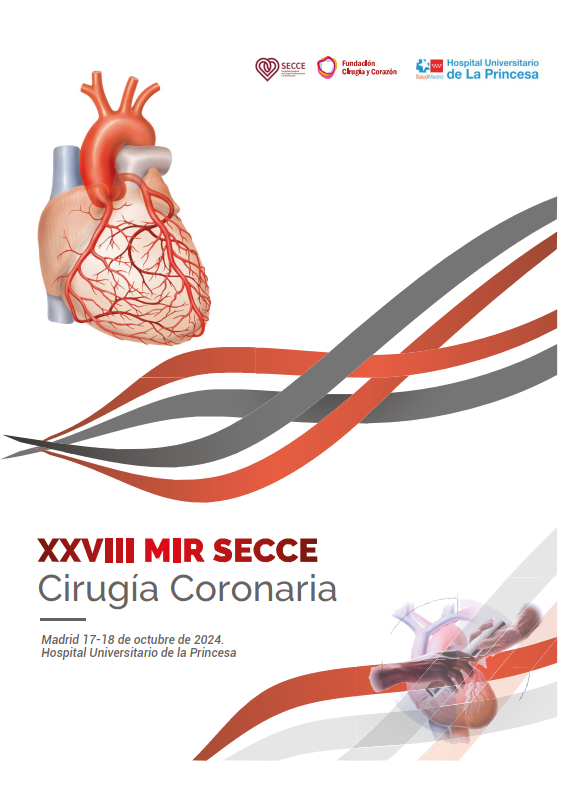Cardiovascular disease remains one of the leading causes of mortality in the United States. Among patients with triple-vessel CAD and preserved LVEF lies one of the most debated clinical dilemmas in current practice and contemporary guidelines. This is a frequent clinical scenario representing a turning point in revascularization strategy. Prognostic benefit has been consistently demonstrated only for surgical coronary artery bypass grafting (CABG), not for percutaneous intervention, and only when complete revascularization was achieved surgically. Nevertheless, published results remain heterogeneous, with variability between anatomical and functional revascularization criteria, and most supporting literature has become outdated.
For this reason, the Society of Thoracic Surgeons (STS) group published in 2025 this study to provide contemporary evidence on the role of surgery in patients with chronic coronary syndromes and stable multivessel disease.
The study included 4061 patients from 11 different centers, all presenting with preserved LVEF and three-vessel CAD, who underwent isolated elective CABG between 2008 and 2020. Despite being considered a palliative procedure, the analysis revealed a paradoxical finding: patients who underwent surgery showed superior long-term survival compared with the general U.S. population of equivalent age and sex.
Independent predictors of higher mortality included age over 65 years, male sex, diabetes mellitus, dialysis dependence, moderate-to-severe chronic obstructive pulmonary disease, and peripheral arterial disease. Risk assessment using the STS score showed that patients with lower scores achieved better operative outcomes, including reduced operative mortality, lower incidence of stroke, and fewer surgical site infections.
No significant inter-center differences were observed regarding the use of bilateral internal mammary artery grafts or multiarterial revascularization. In summary, the authors emphasize that surgically revascularized patients demonstrated a paradoxically higher relative survival compared with the matched U.S. population, while also underscoring the essential role of optimized medical therapy and lifestyle modification in achieving long-term surgical success.
COMMENTARY:
Stable multivessel coronary artery disease (CAD) with preserved LVEF has long been considered a gray zone in revascularization strategy. The 2011 American Heart Association (AHA) guidelines gave a Class I recommendation for surgical revascularization in this population, while the 2021 update downgraded this to Class IIb. This change stemmed from an arguably misinterpreted body of evidence—most notably the ISCHEMIA trial—suggesting no clear survival advantage of surgery over optimal medical therapy. The divergence becomes even more pronounced when compared with the 2024 European guidelines, which place greater emphasis on anatomical complexity as assessed by the SYNTAX score and on the presence of diabetes mellitus.
This study raises a paradoxical yet thought-provoking observation: patients with severe multivessel CAD who underwent palliative surgical correction experienced better survival than the general population of the same age and sex. Such a result likely reflects socioeconomic and systemic factors rather than purely clinical ones. In a healthcare environment like that of the United States—where access to treatment and adherence to guideline-based care are not universal—patient resources and insurance coverage often play a greater role in determining therapeutic options than the recommendations of scientific societies.
Beyond that reflection, the data presented are not easy to interpret, but they set the stage for future comparative analyses of relative survival among patients with stable multivessel CAD managed medically, percutaneously, or surgically. The authors acknowledge several limitations inherent to retrospective studies, including incomplete documentation, underrepresentation of certain subgroups, and variable follow-up duration. The sample size, though moderate for such an extended time window, was sufficient to capture a surgical cohort before and after the 2021 guideline revision, allowing assessment of outcomes over a longer follow-up period and revealing the potential long-term benefits of multiarterial grafting.
In essence, this analysis mirrors an analogous scenario to the surgical arm of the ISCHEMIA trial, yet the comparison is imperfect. It is highly likely that the general population cohort included in the reference model was not uniformly treated or even correctly diagnosed with stable CAD in all cases.
From a broader perspective, this study underscores the persistent uncertainty in defining the optimal therapeutic strategy for patients with stable multivessel disease and preserved LVEF—a population frequently encountered in clinical practice. The paradox is further magnified by the fact that these results emerge from a healthcare system in which surgical revascularization was downgraded to a Class IIb indication, while the comparable “medical therapy arm” (the general population) may in fact be undertreated.
In contrast, European systems—with broader access to care and more consistent long-term medical management and lifestyle optimization—continue to support surgical revascularization as the preferred strategy. Amid the growing spectrum of therapeutic alternatives, the primary goal remains unchanged: to maintain clinical excellence and provide comprehensive management of ischemic heart disease in every cardiovascular surgery unit in Spain.
REFERENCE:
Rong LQ, Shore-Lesserson L, Belani K, Faloye A, García-Sayan E, Lawton J, et al. Considerations of intraoperative transesophageal echocardiography during adult cardiac surgery: a scientific statement from the American Heart Association. Circulation. 2025; 152: 129 – 145. DOI: 10.1161/CIR.0000000000001342



